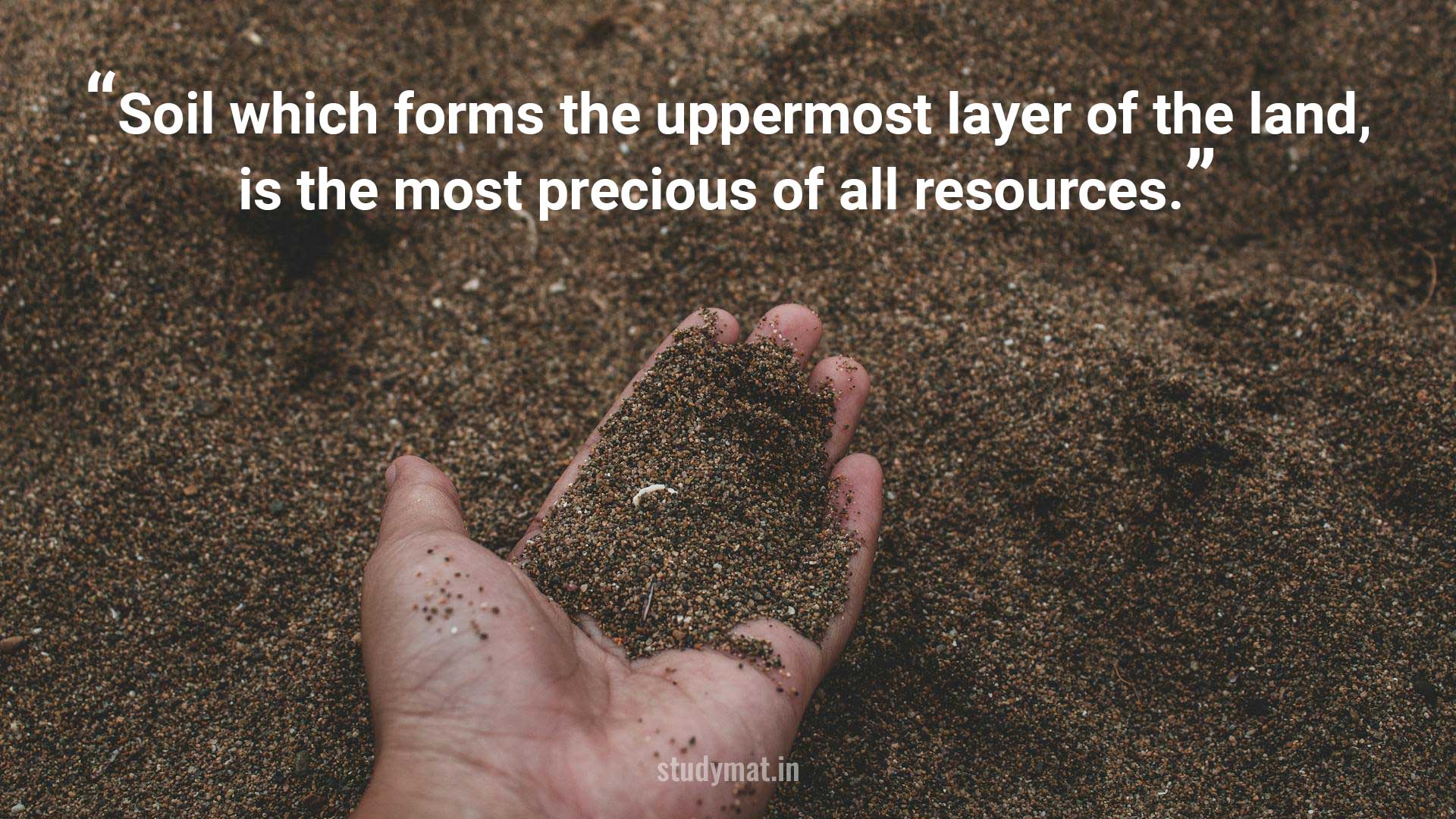In this article, we will explain on the statement,
“Soil which forms the uppermost layer of the land, is the most precious of all resources,”
because it supports the whole life system. It contains things like sand, silt, clay, air, and water. Soil also has nutrients that plants need to grow.
Different places have different types of soil. Some soil is rich in organic matter, which makes it fertile and good for growing crops. Here are some major types of soil:
1. Red Soil:
Found in plateau and lowland areas like eastern Bihar, Madhya Pradesh, Jharkhand, Chhatisgarh, Odisha, Kerala, Karnataka and Andhra Pradesh. Here the rainfall is between 100-300 cm/year and the temperature remains above 22°C. This soil supports rainforests and grasslands. It’s good for growing crops like potatoes, bananas, pineapples and rubber.
Read Also:
2. Black Soil:
Found in areas on the Deccan and Malwa plateaus of western and central India. The soil has a cover of clay, it is loamy and black. It’s very fertile and supports mixed grasslands, forests, and crops like sugarcane, groundnut, soybean, cotton and rice.
3. Desert Soil:
Found in western and north-western India. The soil is low in organic matter and It’s not very fertile, but can become fertile with water.
4. Indo-Gangetic Plain Soil:
Found in the plains of India, especially in places like Bengal, Odisha, Andhra Pradesh, Tamil Nadu, Kerala and Gujarat. This soil has a loamy texture, dry composition and variability of thickness from place to place. It is highly productive and good for growing all kinds of crops.
Read Also:
Explain the Significance of Kul and Bamboo Drip Irrigation Practices.
Explain an Indirect Use Value of Biodiversity.
“Species Diversity is the most visible component of Biodiversity.” Explain.
Differentiate between Food Chain and Food Web.
5. Delta Soil:
Found in wetlands and marshy areas in deltas of rivers like the Ganga Godavari, Krishna, Kaveri and in the river basins of Kerala. It’s very fertile because it has lots of organic matter like decomposed farmyard manure (dung) and plant material (wood peat).
6. Mountain Soil:
Found in the Himalayan region. The colour of this soil is ash grey to pale yellow-brown. It has low fertility and mostly supports plants like oak, pines and deodar.
Related Search:
FAQ:
- How is soil important to us and other life forms?
- What does soil around us contain?
- Which things are mixed with soil?
- How would you define soil?
Follow us:
If you like this article, you can Follow us on Facebook.
Also, you can Join our Official Facebook Group for QnA Sessions and Discussions with the worldwide IGNOU community.


